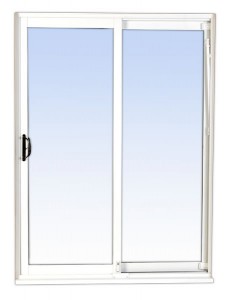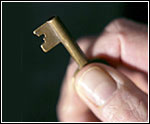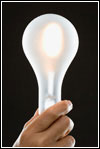June 21st, 2012 by Barry Twynam
 Have you been thinking now is the time to buy that new home in Spruce Grove, Stony Plain, Parkland County or the Edmonton area? Make sure you read about the new rules for government-backed insured mortgages going into effect July 9, 2012.
Have you been thinking now is the time to buy that new home in Spruce Grove, Stony Plain, Parkland County or the Edmonton area? Make sure you read about the new rules for government-backed insured mortgages going into effect July 9, 2012.
1) Maximum amortization reduced to 25 years. Until recently, amortization periods could be as long as 35 years. That dropped to 30 years in 2011 but will now max out at 25 years. The government points out that this allows Canadians to pay off their mortgages faster, meaning a faster build-up of equity and the payment of much less interest, but the bad news is many Canadians may no longer qualify for a mortgage.
2) Maximum amount Canadians can withdraw in refinancing their mortgages decreased to 80% from 85% of the value of their homes.
3) Maximum gross debt service ratio set at 39% and the maximum total debt service ratio at 44%.
4) Government-backed insured mortgages only available to homes with a purchase price of less than $1 million. Homes costing less than $1 million can still be purchased with 5% down but those above $1 million will require a down payment of 20%.
Read the official Government of Canada announcement.
Wondering how to finance your home purchase? I can help you find a lender. Call or text me at 780-910-9669, email me at barry@barryt.ca, or contact me here.
Tags: home buying, Mortgages
Posted in Home Buying, Mortgages, Personal Finance | Comments Off on Changes to Mortgage Rules
June 8th, 2012 by Barry Twynam
 With summer nearly here, most of us are looking forward to spending time on the decks and patios of our Spruce Grove, Stony Plain, Parkland County and Edmonton area homes. That means patio doors will be working overtime as family members go in and out many times through the day.
With summer nearly here, most of us are looking forward to spending time on the decks and patios of our Spruce Grove, Stony Plain, Parkland County and Edmonton area homes. That means patio doors will be working overtime as family members go in and out many times through the day.
Have you noticed a build-up of dirt in the tracks of those patio doors, as well as those of sliding windows? Basic vacuuming doesn’t do a very good job of removing all the dirt, does it? So, what is the best way to make those tracks sparkle again, and incidentally make the doors and windows easier to slide?
Start by removing the loose dirt with the crevice tool of your vacuum cleaner, or brush it out with a stiff-bristled brush. Then, work on removing the sticky residue with a cloth dampened with mineral spirits. The cloth can be stretched over a putty knife to help you reach into the depths and corners of the tracks. Yes, I know; this is fiddly, time-consuming work! But the end result will be worth it, I promise.
Once the tracks are like-new clean, spray them with silicone spray to help the doors and windows slide better. Don’t use a petroleum product like WD-40 as this will attract dirt and cause that greasy build-up you just worked so hard to get rid of. All of the products mentioned above (stiff-bristled brush, mineral spirits, silicone spray) are readily available at stores like Canadian Tire.
Do you have household cleaning or maintenance tips to share? I’d be happy to feature them in future blog articles. Phone or text me at 780-910-9669, email me at btwynam@telusplanet.net, or contact me here.
Tags: cleaning, home maintenance
Posted in Cleaning, Home Repair and Maintenance | Comments Off on Cleaning Patio Door Tracks
May 4th, 2012 by Barry Twynam
 Whether we live in Spruce Grove, Stony Plain, Parkland County or elsewhere, how often as parents have we said those words? And how often have we been less than satisfied with the clean-up efforts of our offspring?
Whether we live in Spruce Grove, Stony Plain, Parkland County or elsewhere, how often as parents have we said those words? And how often have we been less than satisfied with the clean-up efforts of our offspring?
An article published in the April 3, 2012 edition of the Edmonton Journal offers a few tips that might make the next tidying up incident a little more productive. “Teaching kids to cut clutter” suggests the way to make kids’ too small rooms a little bigger is to get rid of some of the stuff in them. Even better would be to never have some of the stuff, such as the junk contents of many birthday party loot bags (who dreams up these things anyway?), enter the rooms in the first place.
The article profiles two moms and writers, Debby Waldman and Rita Feutl, who co-wrote a book for children entitled Room Enough for Daisy based on their personal experiences trying to corral the belongings of their own children. “Feutl says she hopes it prompts thoughtful parents to ask their kids to think about where the material for these things comes from, where they are put together, who puts them together and what they’re paid, how they’re packaged and how they get to the village, town or city where the kids live.” The women hope their book will make kids more aware of their stuff and to take responsibility for it, as well as realize that some things are worth keeping more than others, and that less can be more.
A few of the tips from the article for helping kids cut clutter:
- Use the one-in-one-out rule. When a new item comes into a kid’s room, something else must be removed. But let your child decide.
- Sorting items and keeping like items together in containers and on shelves may go a long way to solving the problem of a messy room.
- If a child doesn’t appear to be using certain items, gather them up and put them away for 6 months. If the child doesn’t ask for the items during that time, consider giving the stuff away.
- If kids want something new, have them contribute to the purchase.
- Be specific when you ask kids to clean their room. Do you want them to clean, as in vacuum and dust, or do you want them to organize, as in pick up those blocks and arrange them in this box?
- Make sorting, arranging and tidying into a time-limited game.
Read the full article for even more good ideas.
If we can teach our kids to be more aware of the difference between wants and needs, and that more and more stuff doesn’t necessarily mean a better life, maybe their generation can do a better job of decluttering the planet!
I always welcome your comments and questions. Call or text me at 780-910-9669, email me at barry@barryt.ca, or contact me here.
Tags: cleaning, de-cluttering, green living
Posted in Cleaning, De-cluttering, Green Living, Home and Family | Comments Off on Go Clean Your Room!
April 26th, 2012 by Barry Twynam
 Spring time in Spruce Grove, Stony Plain, Parkland County and the Edmonton region just feels like the right time to make all kinds of changes and start new things, doesn’t it? If you’ve been thinking of changing your residence or maybe getting into the housing market for the first time, there’s no better time than now. Prices are stable, the inventory of homes on the market is high, and mortgage rates remain at all-time lows. But it’s such a big decision and where do you start? What do you need to know to buy property?
Spring time in Spruce Grove, Stony Plain, Parkland County and the Edmonton region just feels like the right time to make all kinds of changes and start new things, doesn’t it? If you’ve been thinking of changing your residence or maybe getting into the housing market for the first time, there’s no better time than now. Prices are stable, the inventory of homes on the market is high, and mortgage rates remain at all-time lows. But it’s such a big decision and where do you start? What do you need to know to buy property?
The Real Estate Council of Alberta has produced a handy little brochure called The Buying Process that answers a pile of questions you may not even know you had. Some of the many topics covered in a few short pages include:
Decision to buy
Contact a Real Estate Professional
Know Your Options (regarding the relationship you have with a real estate professional)
Your Mortgage (getting pre-qualified and pre-approved and what the difference is)
Costs (besides the purchase price of the home)
Contact a Lawyer
Timing (various deadlines set by the Purchase Contract)
Looking at Properties
Disclosures (sellers are obligated to reveal any defects in their property)
Inspections
Purchase Contracts (the document that presents your offer to the sellers)
Multiple Offers
Terms and Conditions
Property Insurance
This brochure is well worth the few minutes it will take you to read it and should give you a good basic understanding of the process.
If you have further questions, I am always happy to answer them! Please phone or text me at 780-910-9669, email me at barry@barryt.ca, or contact me here.
Tags: home buying
Posted in Home Buying | Comments Off on It’s Time to Buy a House!
April 10th, 2012 by Barry Twynam
 Ah, spring. Warm sunny days, robins returning, snow disappearing – and water everywhere. As a home owner in Spruce Grove, Stony Plain, Parkland County, the Edmonton region or elsewhere, you do everything you can to protect your property. Would it surprise you to learn that the leading cause of damage to property is not break-ins or fire or wild winds, but water? In fact, more than half of all insurance claims, about 1.3 billion dollars’ worth in Canada, are due to water damage. This type of claim is likely to increase as infrastructure ages, the climate changes, and home owners finish every square foot of their dwellings.
Ah, spring. Warm sunny days, robins returning, snow disappearing – and water everywhere. As a home owner in Spruce Grove, Stony Plain, Parkland County, the Edmonton region or elsewhere, you do everything you can to protect your property. Would it surprise you to learn that the leading cause of damage to property is not break-ins or fire or wild winds, but water? In fact, more than half of all insurance claims, about 1.3 billion dollars’ worth in Canada, are due to water damage. This type of claim is likely to increase as infrastructure ages, the climate changes, and home owners finish every square foot of their dwellings.
We’ve all seen the stories in the media about flood damage in Manitoba and parts of the US, but that type of large-scale catastrophe is less common than all the other ways water can ruin a home. And most of the everyday type of water damage, caused by a leaky roof, backed-up sewer or spring run-off, is preventable. Here are a few things you can do to minimize water problems:
- Walk around the entire outside of your home, keeping your eyes open for all the places water could get in.
- Does the grade slope away from your home without any dips where the ground has settled? There should be no area where water drains back toward the house.
- Do the downspouts from eavestroughs extend at least 6 feet from the house?
- Do all doors and windows fit snugly without any cracks where water could seep in?
- As spring approaches, are you diligent about clearing snow and ice away from your home?
- Inspect the roof for missing or damaged shingles and repair any problems. If your roof is older than 15 years, it might be time for a whole new roof.
- Are the eavestrough gutters free and clear of debris so that water can flow freely off the roof?
- Check seals around chimneys, skylights and vents to ensure they are water-tight.
- Regularly check all plumbing (including your hot water tank) and appliances for leaks, and for trouble signs such as rust around a faucet or corrosion around the washing machine hose. One trick for testing whether a toilet is leaking: Add food coloring to the tank. If the color seeps into the bowl after about 20 minutes, you have a leak.
- Burst pipes can cause a major mess. Besides checking for leaks, check that insulation in these areas is adequate.
- Consider installing a sump pump, backwater valve or water sensor, if you don’t already have these items.
- Examine all ceilings for stains which could indicate spots where water has gotten in.
- If you store valuable items in the basement, put them in plastic bins up off the floor.
- Don’t run appliances such as dishwasher or washing machine when nobody is home.
A few other suggestions:
- When you leave on vacation, even for a long weekend, have someone do regular checks of your residence. Check all taps and faucets before you leave (turn off the water to the washing machine!), and consider even turning off the main water valve.
- Review your insurance coverage to make sure you are covered for water perils such as sewer backup and the like.
- If your home is starting to show its age, consider hiring a home inspector to go over your home with you, looking specifically for problem areas before they develop into full-blown trouble.
I love to hear your comments or questions! Call or text me at 780-910-9669, email me at barry@barryt.ca, or contact me here.
Tags: Home Inspection, home maintenance, home repair, water damage
Posted in Home Inspection, Home Repair and Maintenance, Home Safety, Insurance, Tips for Home Owners, Water | Comments Off on Spring Run-off
April 5th, 2012 by Barry Twynam
 Looking for a home, whether in Spruce Grove, Stony Plain, Parkland County, the Edmonton region or elsewhere, is a lot like looking for a mate. Each specimen you find has its own unique features, some great, some not so great – and the trick is to find one you can live with!
Looking for a home, whether in Spruce Grove, Stony Plain, Parkland County, the Edmonton region or elsewhere, is a lot like looking for a mate. Each specimen you find has its own unique features, some great, some not so great – and the trick is to find one you can live with!
When clients give me a long list of things they absolutely have to have in a home, I know we might be looking for a long time, unless those clients have deep pockets! This is equally true if clients are looking for a particular feature that is not common or standard in the average newer home these days. For example, it is rare these days to find new homes, unless they are high-end models, with separate dining rooms. It is more common today for new homes to be built in the open concept style, with a kitchen, dining area and living room that flow together instead of being surrounded by walls.
I usually counsel my clients to make a list of everything they’d like in a home and then to cut that list down to 10 prioritized items. I also encourage my clients to differentiate between needs and wants.
- What are things you absolutely have to have based on family configuration, activities, possessions and so on? For example, a family with two parents, three kids and a grand-parent living with them is going to need a different kind of home than a single person living with his dog.
- What are things that would be nice to have but you could live without if you had to trade off one feature for another? For example, would a laundry room in the basement rather than on the main floor work if it means that some more critical feature is present in a home being considered?
- Are there things that could be changed in the future? For example, an unfinished basement can be a positive or a negative depending on the point of view of prospective buyers. Sometimes a home’s potential counts at least as much as its current condition.
- Notice I haven’t said a word yet about price.
Once a reasonable and well-edited list of must-haves is on the table, I caution my clients that compromise is a word they are probably going to hear a few times before the deal is done. If you have ten must-haves on your list and we are lucky enough to find a home that has seven of your desired features, I consider that a big success.
Let me help you find a home that’s just right for you! Call or text me at 780-910-9669, email me at barry@barryt.ca, or contact me here.
Tags: home buying
Posted in Home Buying, Tips For Home Buyers | Comments Off on That Perfect House
March 28th, 2012 by Barry Twynam
 “Got a half hour to kill? Use it to spruce up your house.” So begins a useful article from the March 24, 2012 edition of the Edmonton Journal entitled “Take time for a quick home spruce-up”.
“Got a half hour to kill? Use it to spruce up your house.” So begins a useful article from the March 24, 2012 edition of the Edmonton Journal entitled “Take time for a quick home spruce-up”.
Most of us want our homes in Spruce Grove, Stony Plain, Parkland County, the Edmonton region or elsewhere to look great, but often the chore of keeping them looking immaculate feels a little overwhelming. This article suggests a number of quick touch-ups that will make your home look and feel a lot better, whether you are doing it for yourself or as part of staging your home for sale.
The author, Mary Beth Breckenridge, starts by suggesting a tour through every part of your home with notebook in hand and a critical eye. Write down every single thing that isn’t quite right. You won’t be fixing them during this walk-through but it will give you an idea of things, big and small, that should probably be attended to.
Now, for a few fix-ups. Breckenridge suggests not just polishing but actually touching up the woodwork of window and door frames, baseboards, etc. to cover up the scratches and dings of day-to-day wear. Read the article for her product suggestions! Chipped paint on walls can be given similar treatment.
Breckenridge recommends Mr. Clean Magic Eraser and Scrubbing Bubbles spray to get rid of smudges around light switches, door knobs and so on.
And then there are the places where dust likes to accumulate but which we often ignore when we do our weekly cleaning ritual: light fixtures (don’t forget to dust the bulbs, and it’s probably time to take apart and wash the chandelier over the dining room table) and fans (including fan blades and bathroom exhaust fans), the tops of doors, the crevices between the carpet edge and baseboards (use the crevice tool on your vacuum for this one). Think high and low, as in ceilings and baseboards.
You won’t be doing all of these things during one cleaning stint, but they make for a quick home brightener if tackled one by one, Breckenridge claims, and are not as time-consuming or onerous as one might think. Read the full article for lots of good ideas to keep your home looking its best.
Got some great home maintenance tips to share? Call or text me at 780-910-9669, email me at barry@barryt.ca, or contact me here.
Tags: cleaning, home improvement, home maintenance, home repair
Posted in Cleaning, Home Improvement, Home Repair and Maintenance, Home Staging, Tips for Home Owners | Comments Off on Be a Clean Freak — or Just Look Like One!
March 6th, 2012 by Barry Twynam
 Are you a water hog or a water miser? Chances are, if you’re like most Canadians, whether you live in Spruce Grove, Stony Plain, Parkland County or elsewhere, you use more water than you should. This excessive water use costs us as homeowners, in higher water bills, and as citizens, putting a strain on infrastructure and resources.
Are you a water hog or a water miser? Chances are, if you’re like most Canadians, whether you live in Spruce Grove, Stony Plain, Parkland County or elsewhere, you use more water than you should. This excessive water use costs us as homeowners, in higher water bills, and as citizens, putting a strain on infrastructure and resources.
“Stemming the flow of H2O”, an article in the March 3, 2012 issue of the Edmonton Journal and written by Patrick Langston of the Ottawa Citizen, contains some startling statistics about water use. For instance, the article states that Canadians on average use 340 litres of water per person per day, the 2nd highest amount in the world.
Other facts quoted in the article:
- Roughly 65% of indoor water use occurs in the bathroom.
- One drop per second from a leaky faucet can waste about 10,000 litres of water in a year. A toilet that keeps running after it’s flushed can waste up to 200,000 litres per year (enough to fill 2 swimming pools!)
- Standard shower heads release 15 to 20 litres of water per minute. A low-flow model cuts that amount in half.
- A standard 18-litre-per-flush toilet, flushed 4 times per day, uses close to 30,000 litres per year. Think of how much water (and money!) can be saved by replacing one standard toilet with a low-flow model that uses 6 litres or less per flush.
- It takes about 265 litres to fill a standard bathtub, more (sometimes much more) for a soaker tub.
- Most front-loading washing machines use about 75 litres per load, about half that of top loaders.
- Think you’re saving money and water if you hand wash your dishes? Hand washing uses about 75 litres, while an Energy Star dishwasher takes about 15 litres per load.
Tips and information abound in this useful article. Some of these things we’ve heard before, like not leaving the tap running when you brush your teeth or wash your hands. Other tips may be new, such as installing a thermostatic valve in the shower so that the shower can be shut off while lathering without having to re-set the water temperature when the tap is turned back on.
The article concludes with conservation tips borrowed from the website WaterUseItWisely.com. This excellent website offers over 100 ways to conserve water, such as:
- When washing dishes by hand, don’t let the water run while rinsing. Fill one sink with wash water and the other with rinse water.
- Wash vegetables in a bowl of water instead of under a running tap. Then use the vegetable water to water houseplants.
- Keep a bottle of water in the refrigerator instead of running the tap.
- When doing laundry, match the water level to the size of the load. Better yet, aim to run your machine only for full loads.
- Install an instant water heater near your kitchen sink so you don’t have to run the water while it heats up.
Read the article and check out WaterUseItWisely.com for much more information. Whether the tips you’ll find there are new or old, we all can stand to be reminded of ways we can help the planet and our wallets!
I would be happy to help you find an energy-efficient home! Call or text me at 780-910-9669, email me at barry@barryt.ca, or contact me here.
Tags: home maintenance, Money-saving ideas, water conservation
Posted in Environment, Green Living, Saving Money, Tips for Home Owners, Water | Comments Off on Be Green, Save Gold on Water
February 29th, 2012 by Barry Twynam
 A good solid lock is one of the best ways to secure the biggest investment most of us will ever make, whether it’s an acreage in Parkland County, a house in Stony Plain or a condo in Spruce Grove. But what if that lock is sticking and your key is not reliably locking and unlocking the door each time? Are there some simple fixes, or do you have to get a locksmith to replace every lock in your home?
A good solid lock is one of the best ways to secure the biggest investment most of us will ever make, whether it’s an acreage in Parkland County, a house in Stony Plain or a condo in Spruce Grove. But what if that lock is sticking and your key is not reliably locking and unlocking the door each time? Are there some simple fixes, or do you have to get a locksmith to replace every lock in your home?
I recently ran across an article entitled “When your key doesn’t unlock the door” published in the January 13, 2012 issue of the Grove Examiner. This article, also found online on the Edmonton Sun website, is well worth a read. The author, noted security expert Frank Fourchalk, has numerous suggestions to solve the problem, from using good old reliable WD-40, to tightening various screws and filing the strike plates, to re-keying (not replacing) your locks, and more. Read his excellent advice on everything relating to home security on his own website, Your Home Security.ca
If you’re concerned about security in your home, take a look also at my checklists:
Home Security Checklist
Fire Safety Checklist
Looking to buy or sell in Spruce Grove, Stony Plain, Parkland County or the Edmonton area? Give me a call at 780-910-9669, email me at barry@barryt.ca or contact me here.
Tags: home security
Posted in Home Safety, Home Security, Tips for Home Owners | Comments Off on Locks, Keys and Making Them Work
February 8th, 2012 by Barry Twynam
 How energy-efficient is your Spruce Grove, Stony Plain, Parkland County or Edmonton area home? Chances are that no matter how well your home is doing, there’s still room for improvement, and that’s true even if you’ve taken advantage of government programs and grants to upgrade such things as the insulation, windows, heating system and the like in your home.
How energy-efficient is your Spruce Grove, Stony Plain, Parkland County or Edmonton area home? Chances are that no matter how well your home is doing, there’s still room for improvement, and that’s true even if you’ve taken advantage of government programs and grants to upgrade such things as the insulation, windows, heating system and the like in your home.
“Make your home an energy fortress”, published January 28, 2012 in the Edmonton Journal asks: “where exactly should you invest when it comes to ramping up your home’s energy efficiency?”
The article quotes Christopher Straka from Ottawa’s Vert Design, a firm that deals with residential and commercial planning, design and development: “Every home has its own energy strengths and weaknesses … based on age, construction and other factors. Only an energy audit, which you’ll need to tap into federal grant programs for upgrades, can pinpoint your individual energy issues. … your best bet is still tightening up the building’s envelope: caulking and weather stripping to reduce leakage, more insulation, and better windows and doors.”
Many of the other things we can do, the article’s author, Patrick Langston, tells us, have an initial cost, but this may be offset somewhat by government grants, and will pay off the longer we remain in our homes. Don’t forget also that each of these improvements will increase the resale value and saleability of your home. While it will cost about $1 per square foot of attic to upgrade insulation and plug air leaks, doing so can save $400+ per year. Spend $3000 to $6000 on a new high-efficiency furnace, and expect to save $500+ annually in heating costs. Switch to a tankless hot water heater at a cost of about $3000, and save $150 per year. Read the whole article for other upgrades that will save energy and money.
Planning to retrofit your home or buy a resale home? Check out fact sheets available at the Canada Mortgage and Housing Corporation website that recommend upgrades for 11 housing types in 5 regions of Canada.
Also included in the article are notes on exciting new technologies that promise to do even more for the energy misers among us. The article concludes with a reminder about the many gadgets most of us can’t live without that gobble up energy, and suggests ways we can reduce our dependence on these energy thieves. Check out the full article.
Looking for a new more energy-efficient home? Give me a call at 780-910-9669, email me at barry@barryt.ca, or contact me here.
Tags: energy efficiency, home improvement, home infrastructure, home maintenance, home repair, Money-saving ideas
Posted in Energy Efficiency, Home Improvement, Home Renovations, Home Repair and Maintenance, Saving Money, Tips for Home Owners | Comments Off on Save Energy and Money in Your Home
 Have you been thinking now is the time to buy that new home in Spruce Grove, Stony Plain, Parkland County or the Edmonton area? Make sure you read about the new rules for government-backed insured mortgages going into effect July 9, 2012.
Have you been thinking now is the time to buy that new home in Spruce Grove, Stony Plain, Parkland County or the Edmonton area? Make sure you read about the new rules for government-backed insured mortgages going into effect July 9, 2012. 










